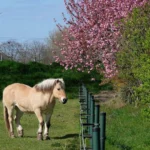Cape Town, South Africa, stands proudly at the edge of the continent, where the turquoise waves of the Atlantic Ocean meet towering cliffs and sprawling vineyards. Yet no sight here grips the spirit more fiercely than Table Mountain. This colossal flat-topped giant dominates the skyline, its sheer cliffs and ancient sandstone layers whispering stories to anyone who dares to listen. From local legends to glaciers of millennia past, Table Mountain is a stage of natural wonders and raw wilderness that thrills the senses and tests the body. Whether ascending on foot through rugged trails or gliding in a cable car, the journey up Table Mountain offers an unforgettable chapter of exploration for those chasing the wild terrains, coastal cliffs, and sweeping plateaus of South Africa.
Table of Contents
The Mountain’s Voice: History and Myth Wrapped in Stone
Long before Cape Town was drawn on maps, the indigenous Khoi and San people revered this plateau as a holy place, calling it “Hoerikwaggo,” meaning “Mountain of the Sea.” The flat summit’s unique shape, visible from miles around, served as a natural landmark for sailors navigating the treacherous Cape waters. Over centuries, the mountain witnessed encounters between nature’s wrath and human endeavor-storms battering the cliffs, explorers braving the wilderness, and now, adventurers challenged by altitude and wind.
Geologically, the mountain is a fortress of ancient sandstone, shaped over 600 million years, once topped by glaciers during the Ice Age, rendering its current form a frozen echo of a distant past. The summit’s edges drop into dizzying cliffs and deep valleys, home to endemic fynbos and unique wildlife, creating a fragile ecosystem few other places in the world boast.
Paths to the Plateau: Reaching Table Mountain’s Summit
Setting off from Cape Town’s city center, getting to Table Mountain feels like stepping from urban hum into a wild cradle. The easiest approach is by car or taxi to the cableway station, located just outside the city center in the Table Mountain National Park. From Cape Town International Airport, a 30-minute drive through the city’s changing landscapes leads you here. If you fancy public transport, several shuttle services connect the airport and central city to the cable station.
For the truly adventurous, hiking up remains an exhilarating choice. The Platteklip Gorge trail is the most direct and steep path from the city side, climbing roughly 3 kilometers through rocky terrain, demanding but rewarding with panoramic views at every turn. Other more secluded routes like Skeleton Gorge begin in Kirstenbosch Botanical Gardens, winding through dense forest before bursting onto the summit.
Perfect Moments: When to Visit for Best Conditions
Table Mountain’s weather is famously unpredictable-one moment cloudless and calm, the next swept by fierce winds and thick mist. For the clearest panoramas, early mornings during the South African summer months from November to March are your best bet. Weekdays tend to be quieter, offering a more intimate communion with the wild surroundings and fewer crowds waiting for the cable car.
On still days, the “tablecloth” of clouds that spills over the edge is a spectacular natural phenomenon, unfolding like a living waterfall. Watching this from the summit is a moment of shared awe among strangers. Do dress in layers; temperatures can shift rapidly, especially atop the plateau exposed to ocean winds.
Planning the Experience: Tickets and Tours
Booking your cable car ticket in advance is highly recommended, particularly in the busy summer season and weekends. The cable cars operate daily from early morning until late afternoon, weather permitting. Tickets can be purchased online via the official Table Mountain Cableway website, which offers real-time updates on availability and weather conditions, ensuring you won’t find yourself waiting in long lines or turned away by sudden closures.
For the hiking enthusiasts, guided tours provide additional safety and insights into the mountain’s flora, fauna, and geology. Local guides share stories of the mountain’s past and point out secret spots-hidden waterfalls, rare flowers, and vantage points that even seasoned hikers might miss. Whether walking or riding, the mountain demands respect for its wild nature and volatile weather, so prepare accordingly.
You can visit the official website at tablemountain.net for all ticketing and tour information.
Where to Rest and Refuel Near Table Mountain
After descending, the nearby neighborhoods offer cozy guesthouses and bed-and-breakfasts nestled among leafy streets or perched on hillsides with sweeping views of the ocean. To truly taste the spirit of the region, try local eateries serving freshly caught seafood or traditional South African dishes like bobotie or sosaties, often paired with robust wines from the nearby Cape Winelands.
For a quick bite before or after your hike, food markets and cafés in Cape Town’s city center provide fresh fruit, pastries, and rich coffee, perfect for recharging before tackling more adventure or reflecting on the day’s climb.
Beyond the Summit: Wild Landscapes to Explore
Table Mountain is more than just the flat top and cable car; it’s a gateway to South Africa’s wilderness trails and natural wonders. Descending alongside the cliff edges reveals hidden valleys carved by ancient rivers, waterfalls cascading quietly into shaded forests, and rare fynbos plants that paint the land in colors unseen elsewhere.
Nearby nature reserves and parks invite longer treks into the heart of this world-class biodiversity hotspot. Wildlife lovers might catch glimpses of dassies (rock hyrax), indigenous birds swirling on the thermals, and even elusive leopards in the more remote areas.
Every step here feels alive with history, nature, and the call of the wild-a perfect blend for those drawn to mountains, valleys, and coastal cliffs alike.

Adventure seeker traveling the world’s most remote places, always ready for the next challenge.
